Dark Souls 3 Review
Familiarity begets greatness in this engrossing Souls finale
If you took the last five From Software titles and stacked them up side by side in a direct comparison, Dark Souls 3 would on paper come out ahead in many areas. It is evidently clear that the developers have made a concerted effort to take the successful aspects of their last several games and combine them in what they claim to be the final entry in the series. The result is the most polished and least obtuse offering so far, removing some of the needlessly cryptic aspects the series has had while maintaining a sense of narrative mystery and remaining jammed with obscure secrets. Dark Souls 3’s biggest weakness is that its formula is no longer as fresh and unique as it once was. Veterans of From Software’s last several games will know exactly how to approach Dark Souls 3. However the formula is still a good one, and it is executed brilliantly here, with only a handful of missteps to bother you throughout your journey.
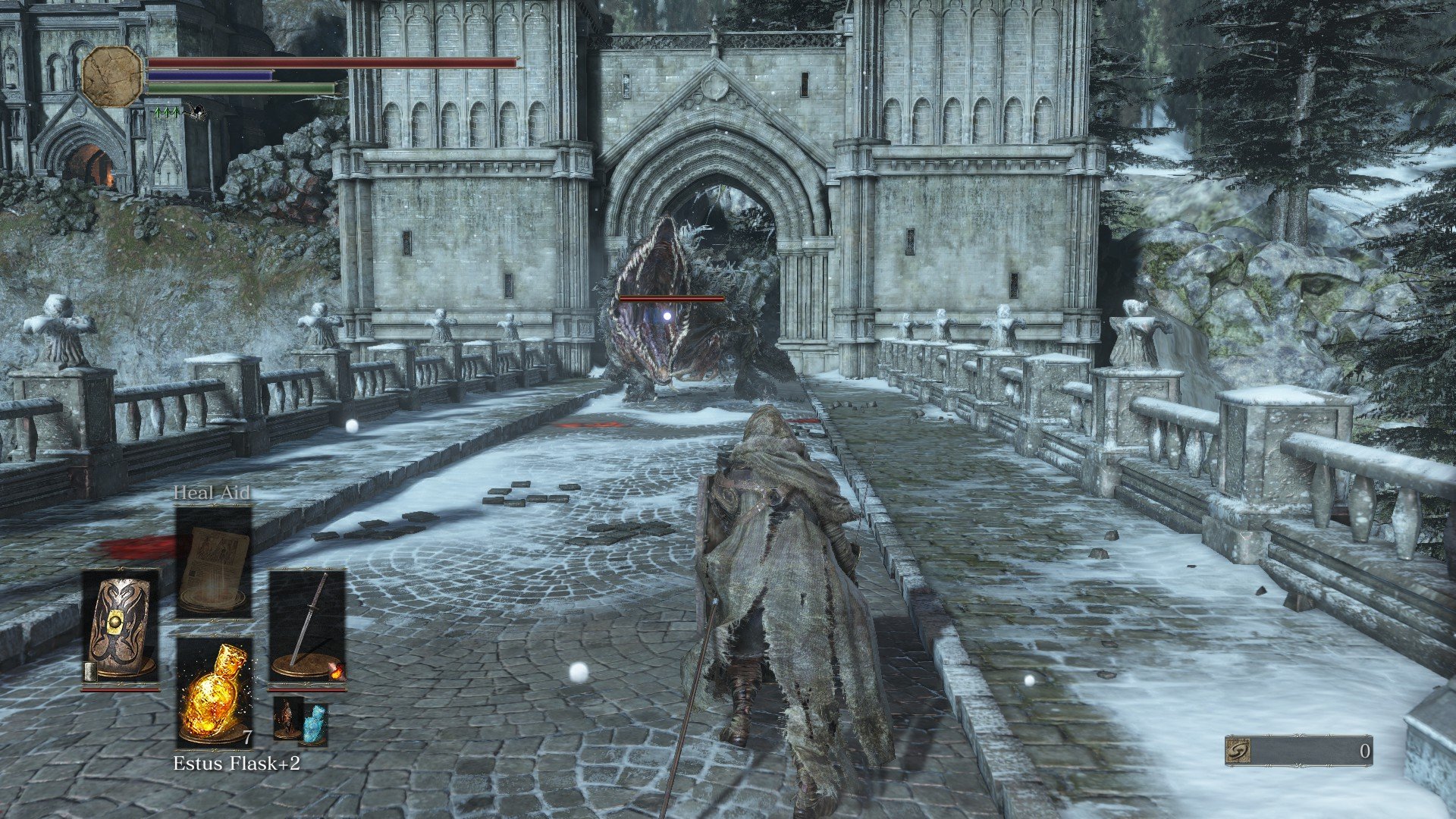
One of the biggest and in my eyes most welcome adjustments made in Dark Souls 3 is the world design. In both Dark Souls and Dark Souls 2 games, it was easy to wander by accident into an area meant for much higher level players very early on. Sometimes it was difficult to figure out if you were in the wrong area, or just not fighting the enemies in the correct way. While Dark Souls 3 does eventually open up, it generally only makes areas available to you that can be tackled with characters of around your level. While the first Dark Souls had a world that felt totally interconnected, and the sequel had several different paths going out in various directions, the third game’s structure is like a single path with optional areas stemming off at frequent intervals.
While this might make it sound like the game is more linear, the more restricted access to areas early on is made up by the size and intricacy of the levels. The first several areas you explore after the tutorial zone are huge, with multiple paths, secret locations, and mini-bosses allowing for hours to be spent in them. They are set up with multiple paths all eventually leading to the area boss fight, interconnected by shortcuts and hidden bonfires. The result is a more controlled experience early on and a more even difficulty curve that helps suck you into the experience.
The early hours are also helped by the fact that the game is much less cryptic when it comes to character customization than past Souls games. Like Dark Souls 2 and Bloodborne, character leveling and weapon upgrades are performed at a hub area, which you can fast travel to from any bonfire. Right away there is vendor who will let you buy and sell items and will gradually improve their stock as you progress through the game. You will also find NPCs out in the world who will then return to the hub area, allowing for further customization. Having all of these mechanics exposed from the off helps reduce the feeling that you might be missing something important, and results in a more enjoyable experience as you focus on exploration and discovery, the areas where this formula has always shone brightest.
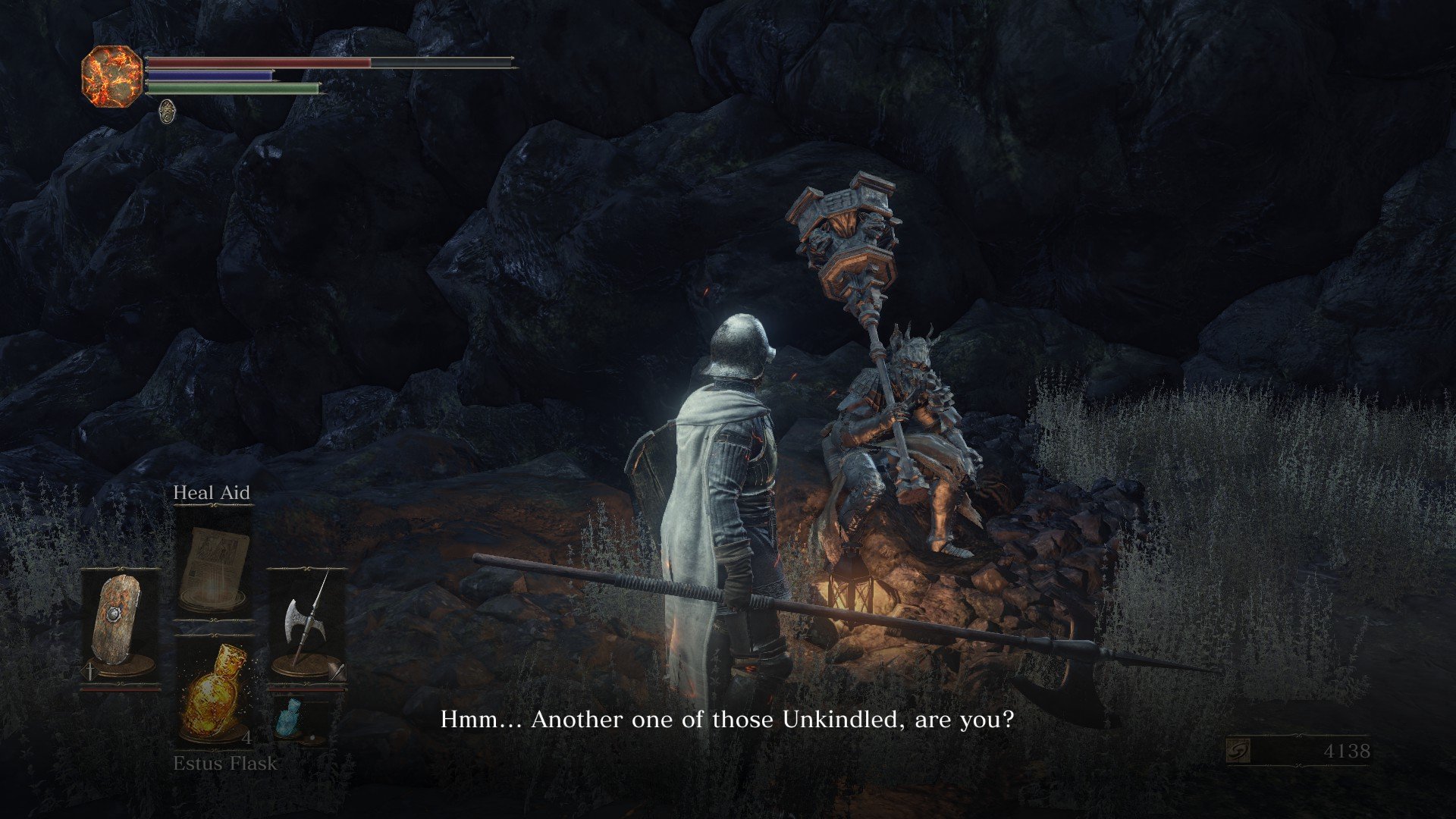
The weapon upgrading bears further description as it has seen some changes as well. In addition to reinforcing weapons with titanite to improve their base stats, you can also infuse them with special stones, similar to how runes work in Diablo. Some infusions add special effects like fire or lightning damage, while others improve the stat-scaling of a weapon, meaning the weapon damage will improve more dramatically as you invest souls into certain player stats. The amount of upgrade materials also seems to be much greater than in past games, so you can experiment with different weapons instead of relying on the same few for your entire playthrough. It is also worth noting that you can no longer reinforce armor, another design element that carries over from Bloodborne.
Another significant change comes in the form of a mana bar that you have in addition to your endurance bar. The mana or ‘focus point’ bar is used to cast spells, and can be recharged with an alternate type of estus flask. You must decide how many flasks you want for recharging health and recharging focus points. This bar is also used for what are known as ‘weapon arts,’ special moves tied to your primary weapon that might do extra damage or provide a temporary boost to your stats. I found these moves to be fairly situational in use, but they add another layer to the already excellent combat system.
In my Dark Souls II review I criticized the game for aimlessness in part due to the overly veiled central narrative thread. The third game fortunately does not suffer from this issue, as your task to track down the four Lords of Cinder is made fairly clear from the start, and NPCs you encounter in the world will sometimes give important clues about where to go next. While Dark Souls II was narratively separated from the first game, the third entry is filled with a lot of direct references to past Souls titles, in particular Dark Souls 1. The specifics of the lore, setting and plot are still about as transparent as a brick wall, but there is at least a bit of a narrative pull to help motivate you through difficult moments, and this being a Souls game, difficult moments abound.
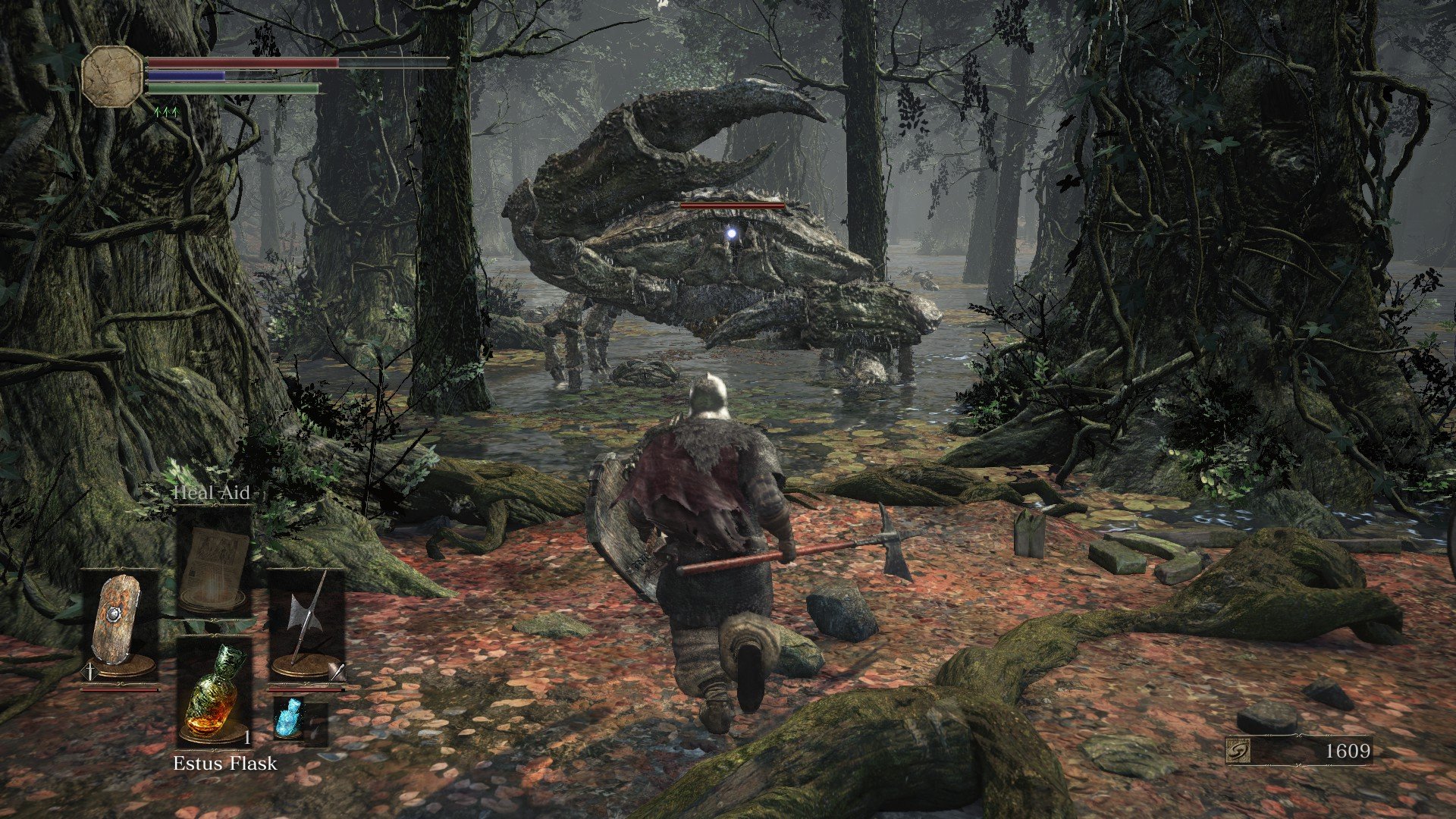
Even though many aspects of Dark Souls 3’s character progression systems have been made clearer, the moment to moment gameplay of exploring new areas is perhaps the most challenging it has ever been. The enemy design has clearly been influenced by the faster more aggressive enemies found in Bloodborne, and you will need to have your wits about you while venturing into new areas. Mistakes are punished swiftly and harshly by enemies who can chain brutal combos that can be difficult to escape from. Shields are no longer as reliable a defense as some enemies will jump on top of you or hit you with such force as to knock your shield back and leave you exposed. Learning which attacks can be blocked and which you need to avoid entirely is a crucial part of success and feels like one of the biggest shake-ups to the core gameplay in Dark Souls 3.
While for the most part the right balance of difficulty is achieved, especially in light of what seems like denser bonfire placement, there are some cases where enemy attacks can feel a bit cheap. Certain enemies will stun lock you and you might find yourself getting killed without a chance to react, while other enemies will pivot in a ridiculous manner to hit you when you were almost behind them. The number of mimics is excessive and fighting off loot chests quickly becomes tedious. At these moments, the game can go from tense to frustrating as you face cheap deaths and are forced to run through the same location several times until you figure out how to avoid them. Fortunately, these moments are rare, and generally the difficulty feels fair, and success is a matter of learning attack patterns and having good timing.
The boss fights are another area where Dark Souls 3 has improved over its direct predecessor. Early bosses are relatively straightforward in terms of attack patterns but can induce panic thanks to creative visual designs, a great way of teaching new players or reminding veterans how to remain calm in stressful situations. As you progress, bosses become increasingly challenging but the arenas are always big enough to give you room to breathe so you have a chance to observe their behavior before diving in. Most boss fights are multi-staged, forcing you to stay on your toes even if you think you have victory dialed in early on.
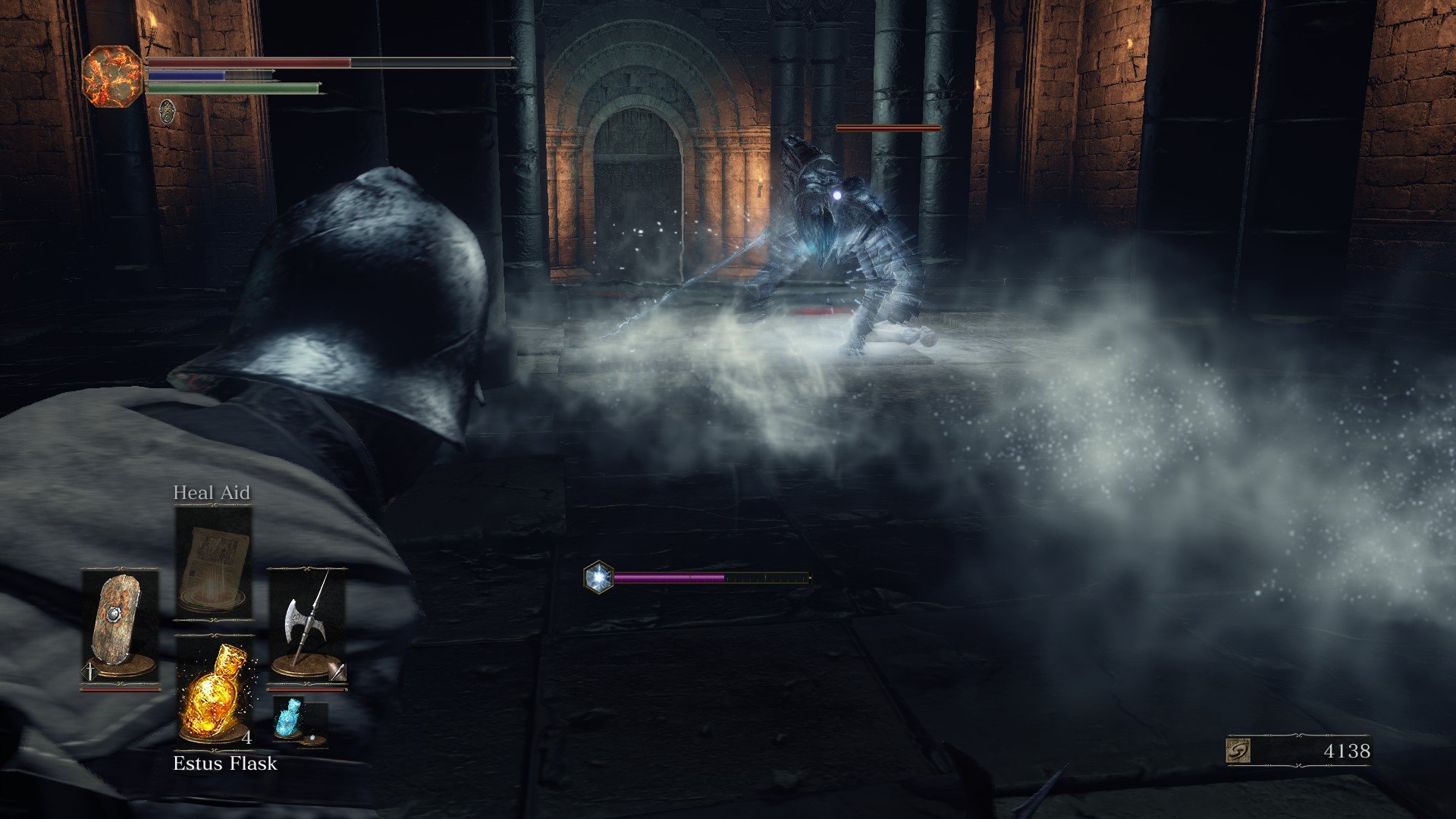
If you are feeling brave and want even more challenging fights, there are dozens of mini-bosses throughout Dark Souls 3 as well. Some of them are optional while others must be defeated in order to progress. While they typically aren’t as visually imposing as the main bosses, some of the toughest fights in the game can be found here, and defeating them is just as satisfying.
Of course, if you are really struggling with an area or a boss, you can always summon help. The equivalent of becoming human in Dark Souls 3 is becoming embered, which like past games involves using an item to unlock the multiplayer aspect of the game and also give your character a significant boost to their health bar. In this state you can summon other players to help you out, with this mechanic being made available nearly from the get-go. However, being embered also means you can be invaded by other players or NPCs. It could be in part due to the large number of people playing Dark Souls 3 at launch, but I felt I was invaded much more frequently in Dark Soul 3 than in previous games, so if you want to summon help, you will also need to be ready to fight off some unwanted company.
If you really would rather not fight other players but still want assistance with tough parts of the game, there are covenants you can join that will cause other players to automatically be summoned to fight by your side whenever you are invaded. Other covenants are focused on PvP, while one has a more ambiguous role as members summoned in can attack other invaders, the host, and monsters in the world. Players do not need to commit to a single covenant and can switch between them on the fly, so you can easily experiment with the different benefits they provide in a single playthrough. The multiplayer scene in Dark Souls 3 feels livelier and functions more smoothly than in any previous From Software game, but it is entirely optional as remaining un-embered prevents these features from being accessed.
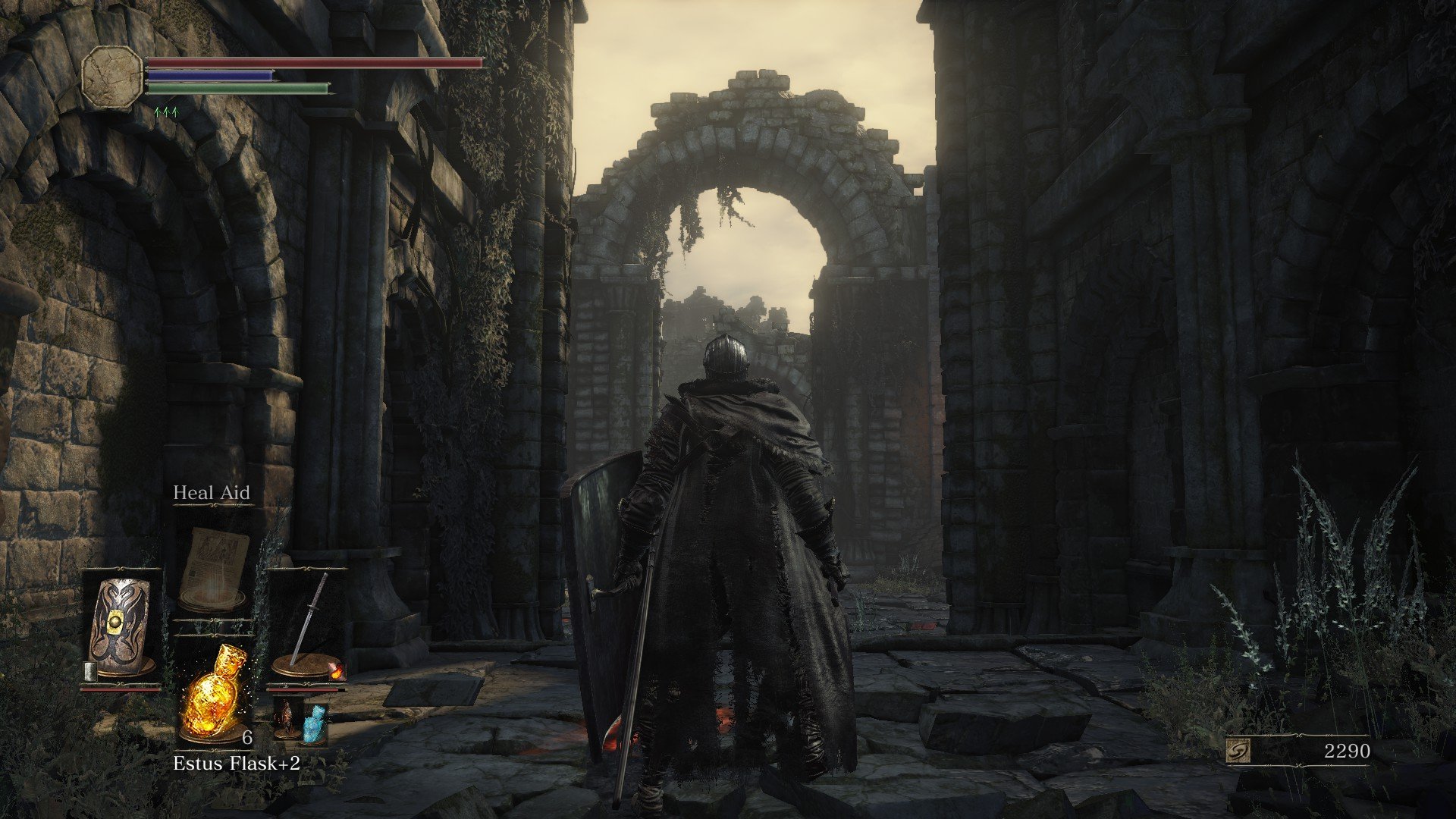
The Souls games have never been known for impressive visuals from a technical perspective, and I am happy to report that Dark Souls 3 manages to buck this trend. While its visuals still aren’t technically cutting edge, the lighting has been improved to a point that it actually looks quite good in many parts. In combination with the great and highly varied environmental design, the visuals help develop a strong atmosphere that increases the immersive qualities to new heights. The game ran very smoothly for me for the vast majority of the time, though I did notice some slight stuttering and frame rate drops in a couple of areas. Sound design remains up to the very high standard the series has always held, with enemies making horrific noises that echo through environments, giving the game a horror-like feel at times. The orchestral music that comes in during boss fights is still an effective way of heightening the tension.
While Dark Souls 3 lacks the novelty of early Souls games and the distinct stylistic direction of Bloodborne, it feels like From Software really nailed the formula here, perhaps more than in any previous effort when taken as a whole package. It is a shame that some of the cheap deaths that seemed largely absent from Bloodborne have made a return here, but they aren’t as prevalent as in past Souls games, and are more than made up for by the excellent level design, creative enemies and series-best character customization. The multiplayer aspects are the smoothest they have ever been and anyone who is on the fence about Dark Souls 3 after the slightly disappointing sequel can rest assured, the final chapter is a much tighter and more enjoyable experience.
 Comments
Comments


















